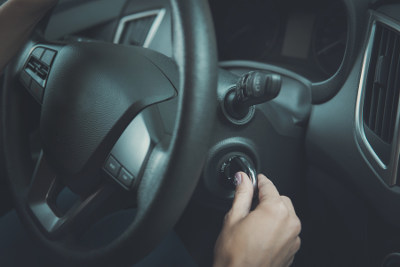
June 3rd, 2020 by
Lockdown regulations have so far dictated that we should stay at home where possible, including working from home and only leaving the house for essential journeys such as for food or medicine. One of the consequences of this is that we’re all using our cars a lot less: great for saving money on fuel and better for the environment but not so good for our car batteries.
Batteries are charged by the engine as we drive around. By not using our cars, we are not only not adding any power to them; we’re allowing their charge to gradually deplete over time. Anything left on that uses charge from the battery will drain it further. Lack of maintenance and age will also contribute to compromising your battery.
Even a car in tip-top condition won’t start with a flat battery and you don’t want to find out that you have one when you need it most. Don’t worry though, as this is mostly avoidable. Here are our top 5 tips for keeping your battery charged during the lockdown.
1. Start your engine
 The simplest way to keep your battery in good charge is to run your car. You don’t necessarily even need to go anywhere; sitting with the engine running for 10-15 minutes a couple of times a week would be enough to top up the charge. (We recommend that you remain in the car so that nobody spots an opportunity to steal it!). Now that lockdown regulations have been loosened slightly, it is permissible to drive to another location for the purposes of exercise so finding a nice place for a walk, run, or cycle, that you can drive out to will not only provide a change of scenery but will help care for your battery.
The simplest way to keep your battery in good charge is to run your car. You don’t necessarily even need to go anywhere; sitting with the engine running for 10-15 minutes a couple of times a week would be enough to top up the charge. (We recommend that you remain in the car so that nobody spots an opportunity to steal it!). Now that lockdown regulations have been loosened slightly, it is permissible to drive to another location for the purposes of exercise so finding a nice place for a walk, run, or cycle, that you can drive out to will not only provide a change of scenery but will help care for your battery.
2. Give it a longer run
Car batteries charge better on a long run rather than several short ones. It’s therefore beneficial to do a long car journey periodically. Now that the regulations allow this, it’s worth considering – especially if your car has hardly been used over lockdown.
3. Turn everything off
One of the biggest causes of a drained battery is leaving functions like headlights and interior lights on by accident. Whenever you use your car, don’t leave it until you’ve checked that everything is switched off.
4. Check your terminals
 If you feel comfortable under the bonnet of a car (though you certainly don’t need to be a qualified mechanic to do this), check the battery terminals (the points where the battery connects to the engine). Dirt and grim on terminals can prevent the battery from transferring power to the car. Clean away any dirt and debris and make sure connections are tight.
If you feel comfortable under the bonnet of a car (though you certainly don’t need to be a qualified mechanic to do this), check the battery terminals (the points where the battery connects to the engine). Dirt and grim on terminals can prevent the battery from transferring power to the car. Clean away any dirt and debris and make sure connections are tight.
5. Buy a trickle charger
If you are not able to use the car, or allow it to run (for example if any drivers are shielding or ill), then using a trickle charger could be a good alternative. This is a device that plugs into your mains electricity and connects to the car to provide a steady stream of power when not in use.
What to do if your battery is flat
If you do find that your car won’t start then don’t panic as motor mechanics are designated essential workers and will be able to provide assistance. Batteries are also sensitive to temperature so if you haven’t used your car for a while and then try to start it when it’s quite cold outside, such as very early in the morning, you could try again later and may have more luck. While we have been experiencing very warm weather of late, we can be subject to sharp changes in temperature; such is the nature of British summertime.
Comments
Leave a reply
Your e-mail address will not be published. All fields are required


